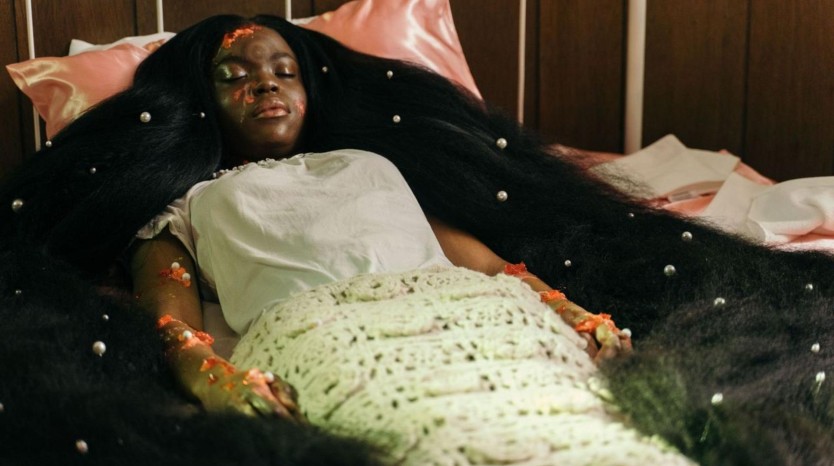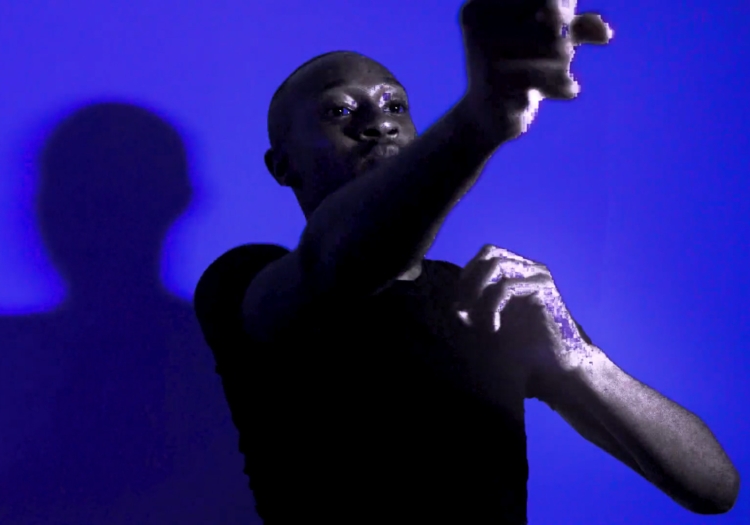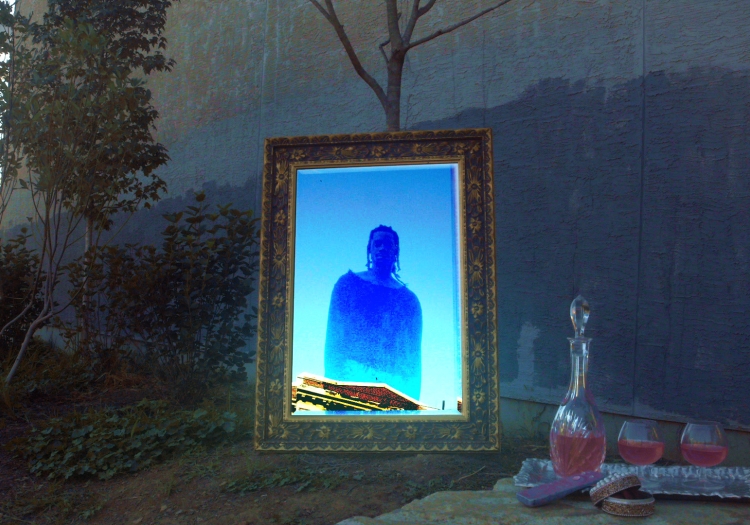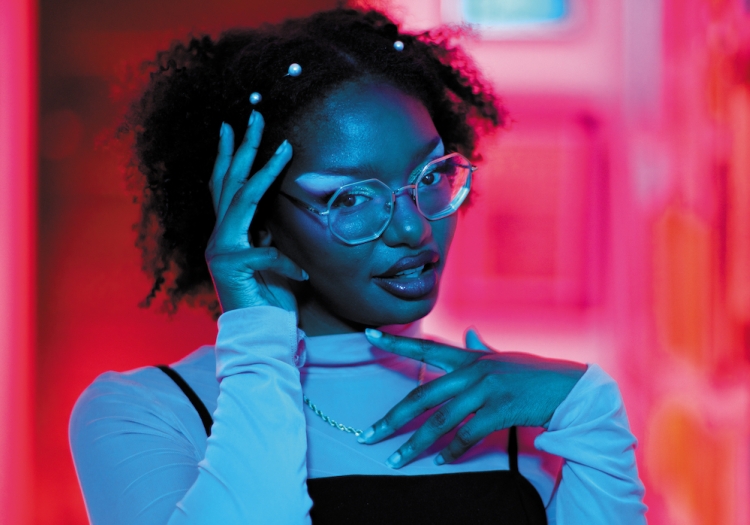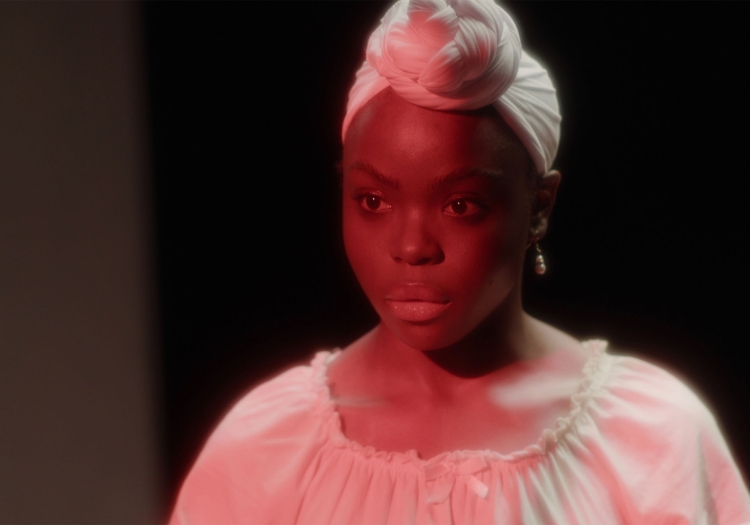UArts Alum’s Film ’OURIKA!’ Headed to Sundance Film Festival
December 7, 2022
UArts Film program graduate Xenia Matthews BFA ’21 (Film) was selected for the 2023 edition of Sundance Film Festival. Her 2022 film OURIKA! originally debuted at the Philadelphia-based BlackStar Film Festival.
Matthews’ glossy, psychedelic short film is headed to Park City, Utah, in the mountains east of Salt Lake City, in January. OURIKA! will screen at the celebrated film festival after it saw its world premiere in Philadelphia last summer. The work has been lauded from the jump, earning Matthews a feature in Filmmaker Magazine’s 25 New Faces of Independent Film roundup.
OURIKA! came together with the support of the BlackStar Philadelphia Filmmaker Lab, which gives voice to younger artists through its film production lab which helps fund the production cycles of upcoming filmmakers.
OURIKA! originally debuted alongside three other short films funded through the inaugural run of the BlackStar Filmmaker Lab at the festival in early August 2022. The film—a surreal, 18-minute glamorous sci-fi deconstruction of the tale of a Senegalese girl named Ourika who was enslaved by a French aristocrat—was warmly received and went on to be featured in the Indie Memphis Film Festival in October. In Matthews’ film, Ourika has been dead for over 200 years, her soul wandering through a dark, endless void where she encounters ghosts from her previous life. As Ourika journeys, two sister scientists, Velinda and Ronnell, work tirelessly for decades in hopes that they can bring her back to life.
“OURIKA! began when she came to me in an art history class” said Matthews of the inspiration. “We looked at artworks tied to the French and Haitian Revolutions. There were so many beautifully crafted depictions of Black people but the one that stuck with me was a painting of a young Senegalese girl named Ourika. The more I read about her, the more I found her story so strange...but so familiar … I have felt the feeling too many times - that my body is everyone’s but my own - to look at, to consume, to deplete, to project upon, to see it as an excuse to ignore the person inside.”
“Discovering her story was part of discovering myself” Matthews continued in her director’s statement. “I often feel alone in time because history, especially Black history, is dominated by very tough figures. ... But Ourika … was depicted so softly, her story was so tragic, … she was enslaved but … she was a pet, a plaything, an accessory for a French woman … she lived as a commodity and she died as a commodity [at 16 years of age]. A fiction novel written about her death and life sparked … plays, poems, costumes, and paintings of a dead black girl [that] were bought and sold and celebrated. An image without a soul, consumed - it felt familiar. But I didn’t want to make a slave movie. I didn’t want to retell or re-enact. I wanted there to be more for her. If she could escape the purgatory of being a thing, how would she do it? Then my mind went wandering. This was going to be a reanimation story.”
OURIKA! is a novel departure from Matthew’s previous work, resulting from new approaches and methods in the creative process. It was Matthews’ first production after graduating from UArts and, notably, is her first experience with a fully funded production cycle and extended production team, thanks to the funding from BlackStar Filmmaker Lab.
But the film is also significant as more exploratory, rooted less in Matthews’ own experience and more in a venture into an existing narrative. While much of Matthews’ work focuses on experiences of Black womanhood—in her words, “the joys, the struggles, the misunderstood [...] externalizing what is often only experienced internally”—OURIKA! is based on the eponymous 1823 novel by Claire de Duras. Matthews’ previous work was often emphatically biographical, refracting deeply personal experiences through experimental, glittering films.
Indeed, OURIKA! rides the momentum Matthews started building with her acclaimed semi-autobiographical 2021 short film A Few Things I'm Beginning to Understand, originally her thesis work for the UArts Film program. From its debut at the 2021 UArts Film Thesis Showcase, the film has made the rounds, appearing at the Denton Black Film Festival (January 2022) Houston Cinema Arts Festival (November 2021) Indie Memphis Film Festival (October 2021) Topaz Film Festival (October 2021) Black Femme Supremacy Film Festival (September 2021), National Film Festival for Talented Youth (April 2022), culminating at the Slamdance Film Festival (January 2022) this year.
In her own description of the film, Matthews invites the viewer to “surf the glittering channels of Xenia’s mind in this highly saturated, musical spectacular where she and an old friend start making sense of the issues between Xenia and her boyfriend, Keke.”
Matthews says that A Few Things … came from a sense of an internal attitude shift, stemming from many profound, intense developments - personal, social, global. Many of the motivations for A Few Things sprang from the joint pressure-cookers of the coronavirus pandemic and the massive social upheaval of the 2020 protests for racial justice.
Matthews had at that point been regularly attending Black Lives Matter actions since 2014, motivated in no small part by living through the killing of Trayvon Martin just one county over from her hometown in Florida. Seeing the uprisings and energy of the protests in the summer of 2020 after many years of being “used to having to yell and scream and fight for people to listen” was a perspective shift, she said. Framed by the sense of isolation during the pandemic, Matthews turned inward and “wanted to explore a softer side of these issues and how it was affecting me and my boyfriend personally.”
A key contextual experience for Matthew’s delving occurred in 2019 when her boyfriend, who is Black, was arrested on bogus pretenses in the Rittenhouse neighborhood of Philadelphia while Matthews was at work. The experience was chaotic and harrowing, including an overnight scramble to track down what precinct at which he was booked. After being held overnight, he was charged with eight counts, including two felonies, which were ultimately dropped when the coronavirus lockdowns closed courts and continually delayed prosecutorial action.
It wasn’t his first time being arrested, so this distressing, painful experience prompted much sharing and connection between him and Matthews. This painful context made Matthews see the 2020 summer uprisings in a very specific and personal light.
“I felt so much rage and I felt so powerless—it inspired me to see other people fighting for the cause. It made me want to look inward instead of outward. Maybe it’s not all on me to necessarily change things. I think I do need to take a serious look how our whole lives have been affecting me and him.”
In this context, Matthews began working on A Few Things. Intimate test shots of Keke dancing in the park, Matthews placing his head on a table and icing him like a cake. Ultimately, Xenia wrote a song about the whole experience – a sincere expression of love, as well as the sense of heartbreak over not being able to love him to the fullest because of “all of the shit going on, all of the anti-Blackness ingrained in every fiber of how we’ve been raised … [it’s a] song of frustration about being unable to love all the way.”
Matthew’s process was highly exploratory and more like collaging than a proper production period, bouncing from a scattered inception to a procedural cycle of shooting, editing, reviewing, and then shooting and editing again. She was continuing this cycle right up until the deadline before the thesis showcase in May 2021, a continually deepening and expanding process that lent itself to her delving, experiential biographical style.
“It's about flow, rather than structure. It comes together a bit more naturally,” Matthews said.
Matthews credits much of the success of her works to the open-minded approach and explicit institutional support she had at UArts. The encouragement she received for her personal and unique production process allowed Matthews to flourish as more than just a filmmaker; rather, as a comprehensive, holistic artist.
Fully being allowed to be herself was essential to her creative success, says Matthews. She initially came to the Film program from UArts’ Illustration program, and as such identifies as an inherently visual person. For Matthews, the conceptual and visual elements are tied together and the narrative and conceptual often only come afterward, while working and producing. Her professors Mike Attie and Chris Johnson understood this and how it factored into the documentary nature of her work, and encouraged her intuitive approach of piecing together the narrative based on the process, rather than pressing her about rigid production schedules and similar organizational details. They would readily workshop with her based on what she was able to go out and shoot and edit together, and encouraged playful experimentation.
“Everyone coming into film school has an idea of what it’s going to be like … other schools have a very industrial model – like, a very producer-oriented track or an editor track, where everyone stays in their lane and collaborates on projects but everyone stays in their specific role,” she explained. “At UArts, it was encouraged for you to dip your toe into every aspect of filmmaking and rather than focusing on the super technical elements of filmmaking , of which there are many, we were encouraged to find our voices as artists.”
“If I had gotten hung up on screenplays and planning I wouldn’t have made anything as good as I did. It’s definitely something I learned at UArts,” Matthews said. “I’m super-thankful I went to an art school instead of a film school. I see film as my artistic practice, and it’s not something I want to do for anybody else, I don’t want to go to Hollywood or be a director as my job. This is very much about how I make my art.”
But beyond the freedom to really explore a personal workflow, the collaborative environment of UArts and the broader creative community it nurtures is also an integral part of what made OURIKA! shine. Matthews worked with many UArts students and graduates on the project, including Evesha Harry ’23 (Acting), David Dunnington BFA ’20 (Film), Hanna Hamilton BFA ’14 (Film), Kimberly Redman BFA ’18 (Acting) and Jesse Derocco BFA ’21 (Film). Having such a spread of years and specializations between current students and graduates speaks to how UArts acts as a creative incubator, says Matthews.
With Sundance catapulting Matthews to a new level, it’s natural to ask what comes next. In conversation before her latest big break, she alluded to daydreams of developing a gallery or theater space for film. Matthews sees all of her film works as inherently installable and envisions a highly decorated space where film pieces, artwork and performances can cohabitate and be experienced in a communal screening space or museum. This desire for a museum-like space is also the inspiration for Matthew’s website name, Muxeeum.
But all in due time. With the breakout success of OURIKA!, and with many more opportunities likely to bubble up after appearing at Sundance, there are plenty more twists and turns to anticipate.






